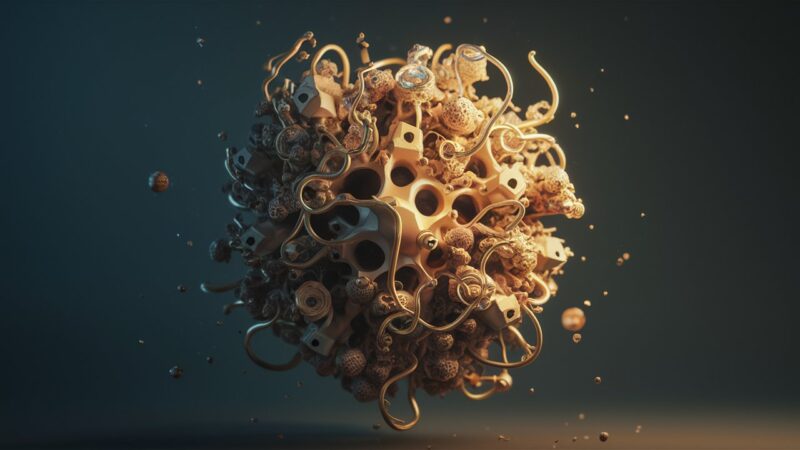In the rapidly evolving landscape of design technology, mastering complex shapes has become the frontier of innovation. Whether it’s the intricate components of cutting-edge machinery or the delicate artistry in custom jewelry, the ability to create detailed and precise shapes is transforming industries. This blog post will explore the advanced techniques and technologies pushing the boundaries of design, offering insights and practical tips for those looking to leverage these advancements.
Understanding the Importance of Complex Shapes
The demand for complex shapes spans numerous fields, from aerospace engineering to consumer electronics. These intricate designs are not just for aesthetics—they often serve critical functional purposes. For instance, in aerospace engineering, the aerodynamics of a part can significantly impact fuel efficiency and performance.
Why Complexity Matters
Complex shapes often mean better performance. Think about the intricate designs of turbine blades or the delicate structures of medical implants. These designs are crucial for advanced functionalities that simpler shapes cannot achieve.
Industries Benefiting from Intricate Designs
Industries such as automotive, aerospace, and healthcare are increasingly relying on complex shapes to push the boundaries of what’s possible. The precision in these designs translates to higher efficiency, better performance, and improved durability.
Challenges in Creating Complex Shapes
Despite their advantages, creating complex shapes poses significant challenges. Traditional manufacturing methods often fall short, necessitating the adoption of advanced technologies to meet these design requirements.
Advanced Technologies in Design and Manufacturing
To achieve intricate designs, industries are turning to advanced manufacturing technologies. These technologies not only offer precision but also make it possible to create shapes that were previously unimaginable.
3D Printing
One of the most revolutionary technologies in manufacturing is 3D printing. This technology allows for the creation of highly complex and customized parts with relative ease.
Benefits of 3D Printing
- Flexibility in Design
- Reduced Waste
- Speedy Prototyping
CNC Milling Services
Another critical technology is CNC (Computer Numerical Control) milling. CNC milling services offer unparalleled precision, making it possible to produce even the most complex shapes with high accuracy.
Advantages of CNC Milling
- High Precision
- Scalability
- Material Versatility
Laser Cutting and Engraving
Laser technology has also made significant strides in creating intricate designs. Laser cutting and engraving are now commonly used in industries ranging from automotive to fashion.
Benefits of Laser Technology
- Enhanced Precision
- Speed
- Minimal Material Waste
Techniques for Mastering Intricate Designs
While technology plays a crucial role, techniques and methodologies in design also significantly impact the creation of complex shapes.
Parametric Design
Parametric design involves using algorithms to define complex shapes. This method is particularly useful in architecture and automotive design, where the smallest details can make a significant difference.
Key Features of Parametric Design
- Flexibility
- Precision
- Customizability
Generative Design
Generative design uses AI algorithms to generate optimized designs based on specific requirements. This approach allows for the creation of highly efficient and innovative shapes.
Advantages of Generative Design
- Optimization
- Innovation
- Resource Efficiency
Topology Optimization
Topology optimization involves optimizing material layout within a given design space. This technique is crucial in industries like aerospace, where weight and strength are critical factors.
Benefits of Topology Optimization
- Weight Reduction
- Increased Strength
- Material Efficiency
Practical Tips for Leveraging Advanced Design Technologies
To effectively integrate these advanced techniques and technologies, consider the following tips:
Understand Your Requirements
Before adopting any technology, it’s essential to understand your specific needs. Different projects may require different approaches.
Key Considerations
- Complexity of Design
- Material Requirements
- Budget Constraints
Invest in Training
Technological advancements are only as good as the people using them. Investing in training can significantly improve the effectiveness of these technologies.
Training Benefits
- Increased Efficiency
- Better Problem Solving
- Higher Quality Output
Collaborate with Experts
Collaborating with experts in the field can provide invaluable insights and improve the quality of your designs.
Benefits of Collaboration
- Access to Specialized Knowledge
- Improved Problem-Solving
- Enhanced Innovation
The Future of Intricate Design Technologies
Looking ahead, the future of intricate design technologies is promising. Emerging technologies and methodologies will continue to push the boundaries of what is possible.
AI and Machine Learning
AI and machine learning are set to revolutionize the design industry further. These technologies can optimize designs in ways that were previously unimaginable.
Future Prospects
- Enhanced Optimization
- Increased Innovation
- Reduced Time to Market
Sustainable Design
Sustainability is becoming a crucial consideration in design. Future technologies will focus on creating complex shapes that are not only efficient but also environmentally friendly.
Sustainable Benefits
- Reduced Waste
- Energy Efficiency
- Eco-Friendly Materials
Integration of Multiple Technologies
The future will see a seamless integration of various technologies, combining the strengths of each to create even more advanced designs.
Integrated Approach
- Holistic Solutions
- Increased Flexibility
- Comprehensive Optimization
Conclusion
Mastering complex shapes is at the cutting edge of modern design and manufacturing. By leveraging advanced technologies like 3D printing, CNC milling services, and laser cutting, industries can create intricate designs that offer superior performance and efficiency. Understanding and adopting these technologies and techniques can significantly enhance your design capabilities, providing a competitive edge in the market.





